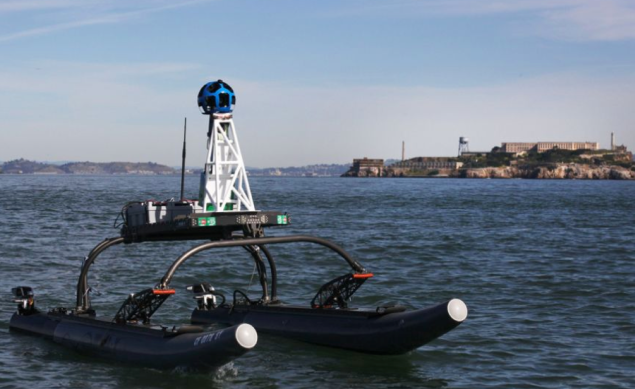Find related research based on location and biophysical attributes: Map search
/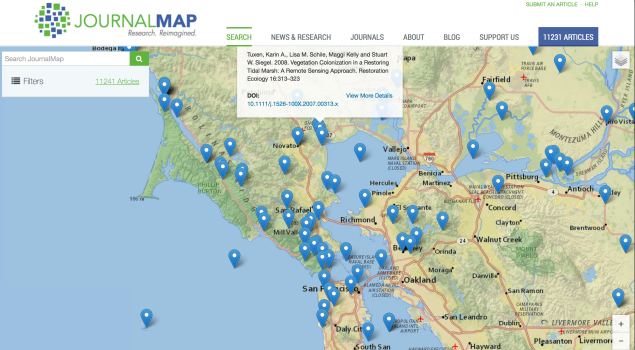
Check it out: another way to search for research. JournalMap is a scientific literature search engine that empowers you to find relevant research based on location and biophysical attributes combined with traditional keyword searches. It works ok, I found one of my papers, not others. But the interface it quick and intuitive.
http://www.journalmap.org/
SFEI releases new websites to support wetland management and protection
/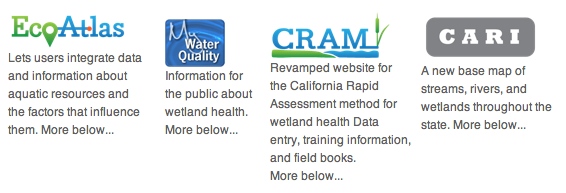 SFEI, on behalf of the Wetland Monitoring Workgroup is releasing a series of technology tools to help with aquatic resource protection and management. “These new online tools will empower Californians to access information about the value and health of their wetlands," said U.S. Environmental Protection Agency Regional Administrator Jared Blumenfeld.
SFEI, on behalf of the Wetland Monitoring Workgroup is releasing a series of technology tools to help with aquatic resource protection and management. “These new online tools will empower Californians to access information about the value and health of their wetlands," said U.S. Environmental Protection Agency Regional Administrator Jared Blumenfeld.
EcoAtlas
EcoAtlas is designed to support management decisions about wetlands. By compiling state and federal maps and data about wetlands, EcoAtlas gives site visitors access to salient information about the condition and extent of streams, wetlands, lakes, and their surrounding riparian areas. www.ecoatlas.org
Wetlands Portal
The Wetlands Portal is the latest in the series of My Water Quality Portals (www.MyWaterQuality.ca.gov) designed to help the general public find answers to fundamental questions related to water quality both in their communities and across the state as a whole.
CRAM
The California Rapid Assessment Method is a cost-effective and scientifically sound method for monitoring wetland condition. http://www.cramwetlands.org/
CARI
The California Aquatic Resource Inventory is a standardized statewide map of wetlands, streams, and riparian areas. http://www.sfei.org/it/gis/cari
Lisa Schile is off to Abu Dhabi
/Dr. Lisa Schile is off to Abu Dhabi for a postdoctoral research position with the Smithsonian Institution. She'll be working on a project monitoring carbon sequestration in wetlands. We checked out some of the available Abu Dhabi imagery on-line. The country has a long and interesting coastline, with many mangroves and wetlands, and of course the ever increasing coastal development. Here is a snapshot from NASA of coastal development. Lisa has started a blog, and taking lots of pics for us to see.
Launch of Sonoma County Veg Mapping Program
/The Sonoma County Agricultural Preservation and Open Space District has begun a 3-5 year program to map Sonoma County’s diverse plant communities.
An accurate, up-to-date map of vegetation and habitat type is key to ensuring good planning and management for watershed protection, flood control, fire and fuels management, and wildlife habitat conservation. A vegetation map is also critical to assessing climate benefits provided by the landscape, such as the amount of carbon being absorbed from the atmosphere or the degree to which the landscape is buffering extreme weather events.
These folks are using 3-6-inch CIR imagery and obia to map vegetation across Sonoma County. GIF is serving up the imagery! Check it out!
Make way for the bay! SF Baylands under climate change
/From last year's State of the Estuary Conference. Josh Collins from the San Francisco Estuary in his talk "State of the Bay 2011: Baylands" makes an optimistic case for future baylands/wetlands in the bay, as long as we "make way for the bay": meaning, wetlands need to be able to move inland and upstream as sea level rises. He also talks about changes in size classes in marshes across the bay from the 1800s through 2010. We talk about this need for space for wetlands to move in our paper, published last year.
Wetland restoration reduces sea level rise impacts over next 100 years in the SF Bay
/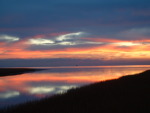
"Tidal marshes are incredibly resilient to changes in sea level, depending on how fast seas rise and how much sediment is available. Unfortunately, marshes cannot keep up with the high-end sea-level rise predictions on their own. They will need our help.” said Diana Stralberg, the study lead author of PRBO and the University of Alberta.
Our study was published this week in the high-impact journal PLoS ONE. To view maps of where the marshes will be under various scenarios over the next 100 years, visit www.prbo.org/sfbayslr. News coverage from SF Chronicle here. CNR coverage here.
Wetland Tracker site, updated with new wetland data
/ Berkeley close up: orange are planned wetland restoration sites; yellow lines are impacted streams, blue lines are natural streams.SFEI's Wetland Tracker site has been updated with new wetland data. Specifically, the site makes available BAARI data. BAARI - the Bay Area Aquatic Resource Inventory - is a detailed base map of the Bay Area's aquatic features that includes all wetlands, open water, streams, ditches, tidal marshes and flats, and riparian
Berkeley close up: orange are planned wetland restoration sites; yellow lines are impacted streams, blue lines are natural streams.SFEI's Wetland Tracker site has been updated with new wetland data. Specifically, the site makes available BAARI data. BAARI - the Bay Area Aquatic Resource Inventory - is a detailed base map of the Bay Area's aquatic features that includes all wetlands, open water, streams, ditches, tidal marshes and flats, and riparian
areas. The BAARI data will be used to track changes in the extent and condition of aquatic habitat, aid in ecological sample drawing, and is featured on the California Wetlands Portal, where users can browse the area's
aquatic features and restoration projects on an interactive map.
GovMaps.org Launches
/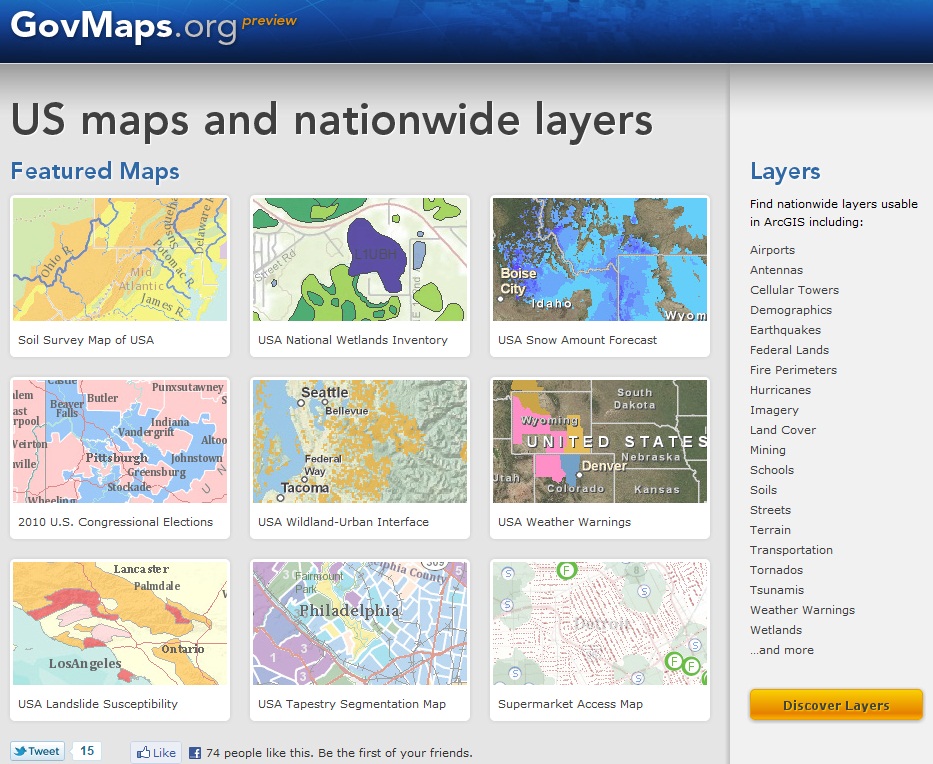
This new website, GovMaps.org, offers yet another easy way to stream useful GIS data right into ArcGIS. NWI, historical fire data, zip codes, etc. are only a click away!
New global map of mangroves
/![]() From NASA. Mangroves are among the most biologically important ecosystems on the planet, and a common feature of tropical and sub-tropical coastlines. But ground-based evidence suggests these vital coastal forests have been strained in many regions because of harvesting for food, fuel, and medicine. Now, scientists have used satellite images to compile the most comprehensive map of mangroves worldwide, which should help in future efforts in monitoring and conservation. New global maps of mangroves have been developed.
From NASA. Mangroves are among the most biologically important ecosystems on the planet, and a common feature of tropical and sub-tropical coastlines. But ground-based evidence suggests these vital coastal forests have been strained in many regions because of harvesting for food, fuel, and medicine. Now, scientists have used satellite images to compile the most comprehensive map of mangroves worldwide, which should help in future efforts in monitoring and conservation. New global maps of mangroves have been developed.
The effort to create the maps was led by Chandra Giri of the U.S. Geological Survey and published recently in the journal Global Ecology and Biogeography. Using digital image classification techniques, the research team compiled and analyzed more than 1,000 scenes from the Landsat series of satellites.
Giri and colleagues found 12.3 percent less area covered by mangroves than previously estimated by the United Nations Food and Agriculture Organization. The current extent of mangroves is probably half of what once existed. Only 6.9 percent of mangrove forests are protected by law.
Mapping wetlands: the GlobWetland project
/A bit late, but a good source of wetland mapping information from the the GlobWetland Symposium: Looking  Lake Bogoria in Kenya, Landsatat wetlands from space. The GlobWetland project was launched in 2003 with the aim of developing and demonstrating earth observation-based information services to support wetland managers and national authorities worldwide in responding to the requirements agreed under the Convention. The project involved 50 different wetlands in 21 countries and relied on the direct collaboration of several regional, national and local conservation authorities and wetland managers. It has now produced a number of standardised information products (e.g. land use and land cover maps, change-detection maps, water cycle regime maps and others) validated over the 50 selected sites by the users themselves, consolidated methods and guidelines for the users to continue the work after the project lifetime.
Lake Bogoria in Kenya, Landsatat wetlands from space. The GlobWetland project was launched in 2003 with the aim of developing and demonstrating earth observation-based information services to support wetland managers and national authorities worldwide in responding to the requirements agreed under the Convention. The project involved 50 different wetlands in 21 countries and relied on the direct collaboration of several regional, national and local conservation authorities and wetland managers. It has now produced a number of standardised information products (e.g. land use and land cover maps, change-detection maps, water cycle regime maps and others) validated over the 50 selected sites by the users themselves, consolidated methods and guidelines for the users to continue the work after the project lifetime.
The GlobWetland Symposium was held in October 2006 in Frascati, Italy to inform the general public and policy makers of the importance of wetlands and to promote their conservation and protection worldwide. The papers in this special issue highlight the major points and recommendations derived from the Symposium while the final conclusions provide a basis for initiating new actions within the ESA in support of the EO requirements of the Ramsar Convention and the wetlands community.
The special issue in Journal of Environmental Management from the conference has many interesting papers on wetlands mapping.
